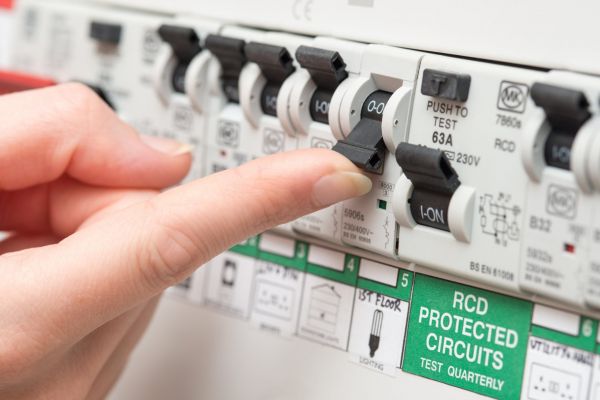Electrical Safety Week: What to know about fault finding RCDs
 By Matt Kummerow
By Matt Kummerow
Master Electricians Australia featured in Circuit Magazine
“How do we fault find RCD-protected circuits?” What is the fault that would cause an RCD to trip?.

Let’s quickly rule out that we are not discussing an overload or short-circuit fault. Most RCD’s incorporate a combination device that also monitors for overload and short-circuit faults. We need to make sure we know the difference between the device we are looking at. Most have an indication window to show this difference. This could be a subject of a whole other article or even a series of articles on fault finding.
Read more from MEA
- Court overrules decision on long-term casuals taking leave
- How MEA Employer Advice Line can help your business
- COVID vaccines at work: what employers need to know
Fault finding on RCD-protected power circuits was always easier as generally the fault was contained in the plug-in equipment and could be easily isolated by unplugging the faulty equipment.
Now that RCD’s are protecting more than just plug-in equipment, there are some more challenges. Lighting circuits can be particularly challenging.
What is Earth Leakage?
Earth leakage is the flow of current from a live conductor to earth through the load equipment, supply cable, or conductor insulation.
What causes Earth Leakage?
If we understand the causes of load equipment, cable, or conductor insulation failure then we can use this to guide our efforts in finding the earth leakage fault.
RCD’s – How do they work?
This is about understanding the nature of the fault.
An RCD will operate when there is an imbalance in the current flow in the active and neutral conductors. Once this imbalance reaches the set threshold, usually 30mA, it opens the circuit.
In an MEN system leakage to earth and current flow in the earthing system is a fault that is likely to lead to electric shock and death. Using an RCD to monitor the imbalance in current flow allows us to detect and protect against this type of fault, therefore, protecting life.
How do you detect or find an Earth Leakage fault?
We are trying to find a breakdown in insulation that is allowing current to “flow” to earth. How do we do this? What test equipment do we use?
Types of Test Equipment
- Insulation Resistance Tester
- When we are testing the insulation resistance between our live conductors and earth. No-fault would be indicated by high or infinite insulation resistance, while a fault would be indicated by low or zero insulation resistance. It is also possible that a fault could be caused by an accumulation of low results on multiple parts/branches of a circuit.
- Earth Leakage Clamp Meter
- This type of tester is great for testing branches of a circuit or individual appliances to “track” the earth leakage.
- Operational Leakage Current Tester
- This is generally used for operational testing of plug-in electrical equipment to measure earth leakage during the operation of the equipment.
- RCD Trip Time Tester
- Using this type of tester will help us determine the correct functionality of the RCD unit itself.
Ensure that we are not covering the same ground more than once.
1. Understand the nature of the fault
Is the RCD is “tripping” – do we have leakage to earth through load equipment, supply cable, or conductor insulation?
Or, do we just have a cumulative leakage to earth that is below the threshold for the individual equipment but there is “too much” of this equipment connected to one RCD?
How do we determine this is the issue?
Is it just a matter of splitting up the load equipment across multiple RCD’s so that the cumulative leakage is not an issue?
Is it a circuit design issue?
2. Select the appropriate electrical test equipment
Once we understand the nature of the fault and assess our site conditions we can make some decisions about the appropriate test equipment we need to locate our fault. In my own personal experience, I always liked to use my insulation resistance tester to “track down” the fault. However, it is always great to have different options in our bag of tricks that will allow us to tailor our testing to our specific scenario.
3. Isolate the fault
As we track down our fault we can start isolating our circuit or installation down into smaller and smaller parts so that we can definitively isolate our fault.
4. Locate the fault
Now that have isolated to a specific piece of the installation or a specific piece of equipment we can start thinking about methods of repair.
5. Effect repairs or replacement
Faulty equipment is generally not an issue and can be easily repaired or replaced.
Where it can get tricky is when we have a fault concealed in part of the installation.
In some cases, repairs or direct replacement of concealed wiring may in some instances not be possible. We may need to isolate a section of wiring, leaving it in place, and install a new section around it or along another route or supply from an alternative location.
At the end of the day fault finding needs to be a methodical process that is aided by our experience, knowledge, and correct use and knowledge of our test equipment. Stay safe!
Master Electricians have unlimited free access to the MEA Technical and Safety support teams. Just one of the many benefits of being a Master Electrician. Call 1300 889 198 to find out more.